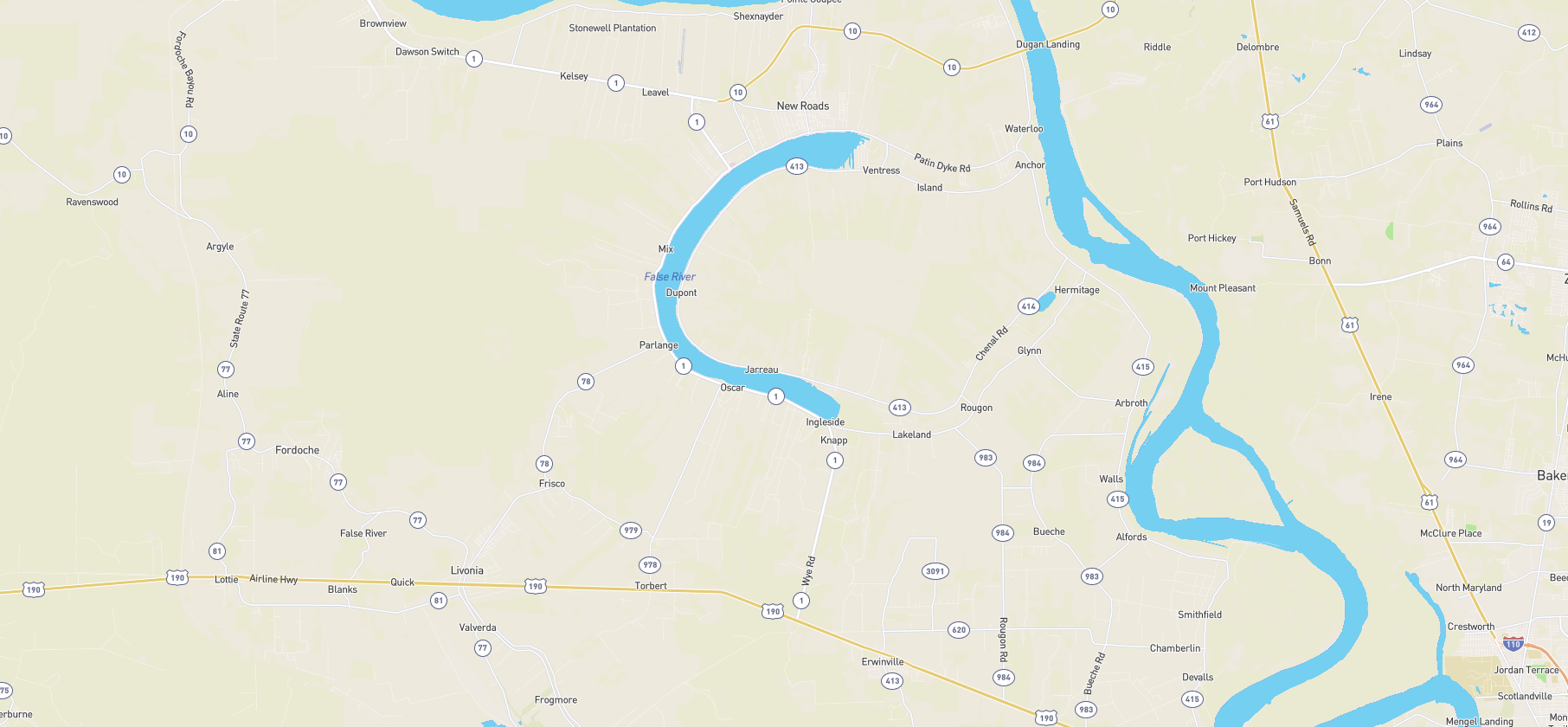
NEW ROADS, La. – Following five years of restoration work, False River hasn’t yet returned to the quality that earned it designation as one of Louisiana’s first two trophy fisheries in 1991. But it’s getting there, according to assessments by both fisheries managers and anglers.
“We haven’t reach the promised land yet, and it hasn’t been easy,” said Tommy Bryan, a member of the Twin River Anglers, which has helped with stocking of Florida-strain largemouths since 2014.
“But we have made steady progress toward rehabbing our once glorious False River fishery. The water is getting better and so is the fishing.”
Ricky Moses, Biologist Director for Louisiana Department of Wildlife and Fisheries (DWF) added, that “people are impatient” for the restoration work to be finished, especially since a 2016 drawdown of 5 1/2 inconvenienced some waterfront property owners, and a similar drawdown planned for fall and winter of 2017 likely will do the same.
“But we had a problem with sediment going into the lake for 30 years, and one drawdown is not going to make up for that,” he said. “The mud is chest deep in some places.”
Biologist Brian Heimann added that long-range plans call for a drawdown on the 3,400-acre oxbow fishery every three years, as managers hope to sustain the fishery that they are rebuilding. He also said that mats will be put down at a public launch during the drawdowns to help keep the lake accessible to fishermen.
Annual stockings and fall-winter drawdowns are but two of the strategies being employed to bring back False River, which slipped into decline about the same time it was designated a trophy fishery. Deterioration likely began with canals being dug to allow water – and sediment – to pour quickly into the Pointe Coupee Parish oxbow, which used to be a part of the Mississippi River, instead of filtering through wetlands. Additionally, a ban on use of nets and seines to harvest rough fish was initiated in 1991, in keeping with the designation as a trophy bass fishery.
The combination led to smothering of spawning substrate, decline in aquatic vegetation due to increase in turbidity, and a dramatic increase in shad, carp and other rough fish, which thrived in the degraded water. By 1998, trophy status was rescinded and DWF designated False River a lake of special concern.
“For awhile, you don’t realize it’s declining, until you wake up one day and the reality hits you,” Bryan said. “Then you begin working toward restoration, and, unfortunately, it takes as long to change the habitat as it did for it to decline. But we are now headed in the right direction.”
Recovery really began in 2012 with formation of the False River Watershed Council to serve as advisory to DWF. About the same time, the Army Corps of Engineers, following years of procrastination, finally withdrew from the project, citing the high cost of studying the effects of a drawdown on homes and structures along the shoreline.
“Ron Pourciau, president of the Twin River Anglers, sits on the False River Watershed Council, and has been an integral part of restoration efforts in False River,” said Heimann.
Since then, commercial harvest of rough fish has resumed in fall and winter. “That has been a success,” said Moses. “We’ve harvested thousands of pounds, and we’re seeing improvement in water quality, less turbidity and fewer excessive algae blooms.”
Dredge work on the south end has helped with that as well, Heimann said, adding that the watershed council hopes that similar work can be done on the north end. “The holdup is what to do with the dredge material.”
On the south end, an island was created, with increased depth around it. The biologist added that vegetation now is growing in the protected waters behind the island. “The emergents are there,” he said. “Now we’re waiting for submergents.”
Heimann also said that plans are underway to build weirs upstream to slow down flow and trap sediment.
“Habitat is first,” he explained. “We have to stop the siltation and slow the excess nutrients. That will improve clarity and bring back the vegetation.”
Moses added, “There’s no structure in this lake. It’s an old river-system oxbow, a big, long scar with lots of open water. Bass depend on cover and that fringe of vegetation is very important.”
And as the water clears and vegetation returns, DWF makes incremental stockings to accommodate the returning habitat. Three hundred adult bass were stocked in 2014, along with 6,000 fingerlings. Similar numbers of fingerlings have been added annually since, as well as redear, bluegill, striped bass and hybrid striped bass. In addition to provided another option for anglers, the latter also will help bring the lake’s large shad population under control.
Full restoration still is years away, but Bryan eagerly is looking forward to it. “You can’t imagine the economic impact this lake will have on the community when it gets its quality back,” he said. “There used to be dozens of boat launches all over the river. But when the fishing fell off the boat launches sort of just went away.”





